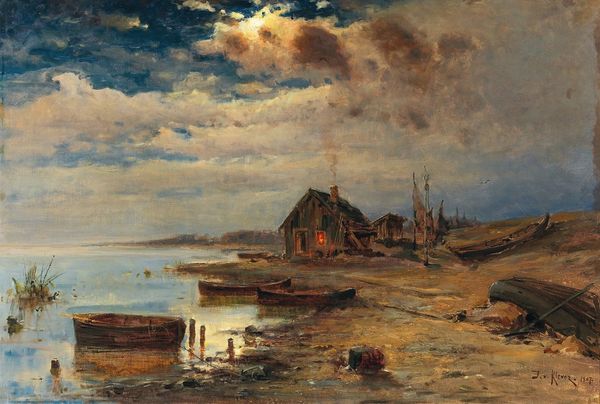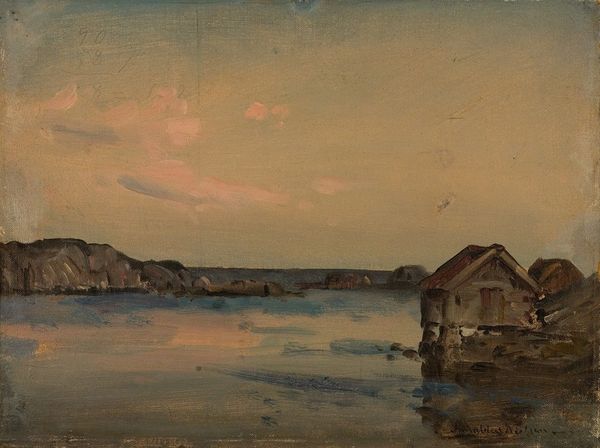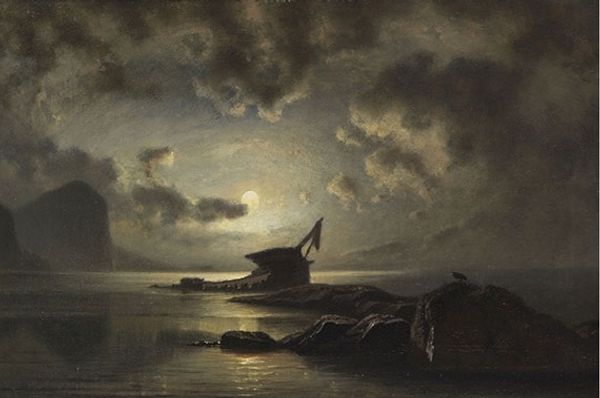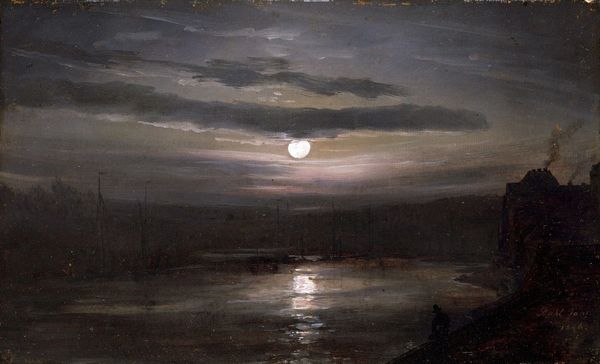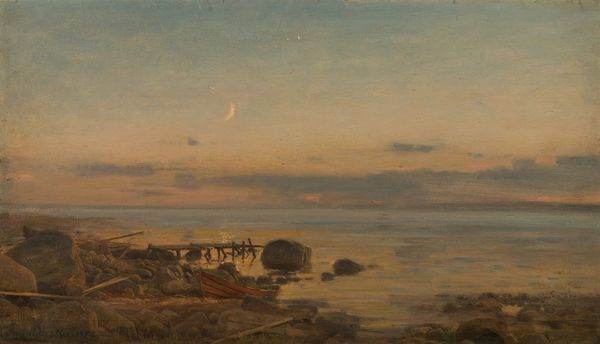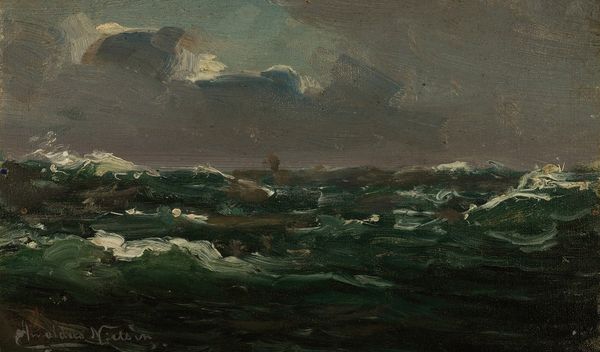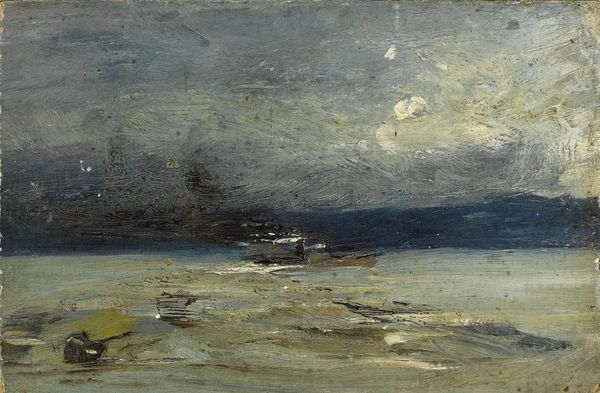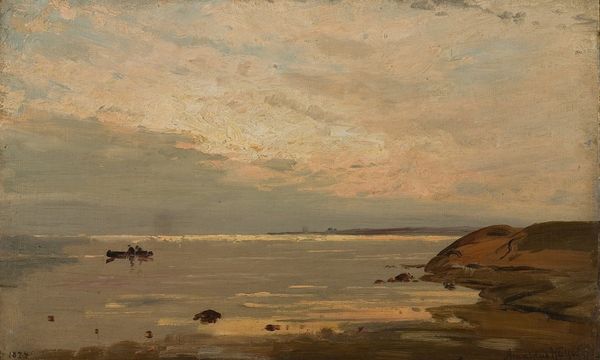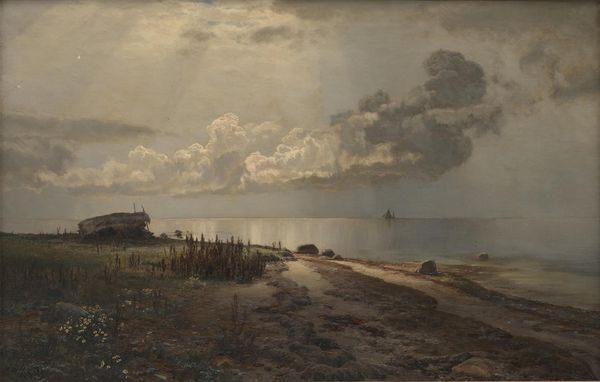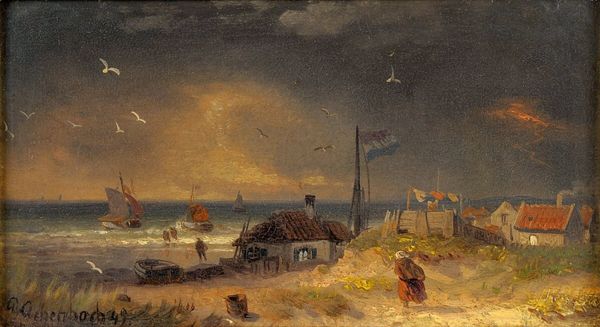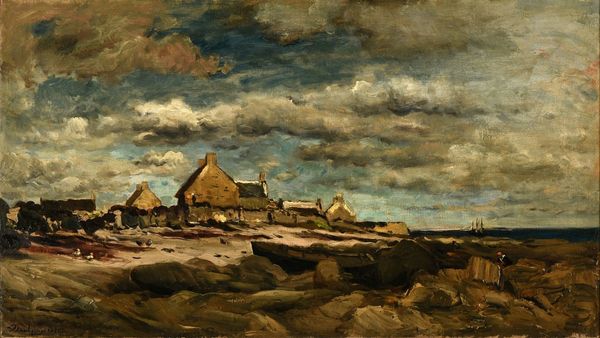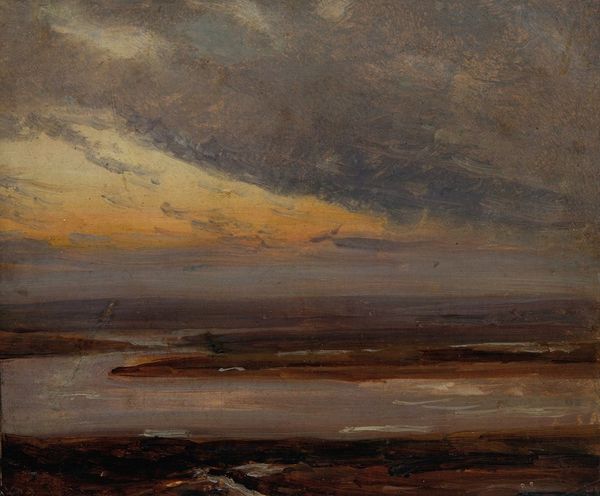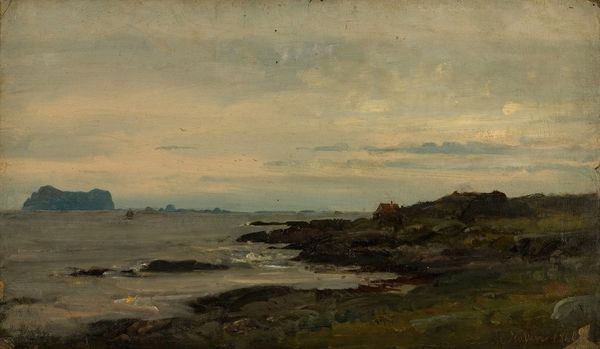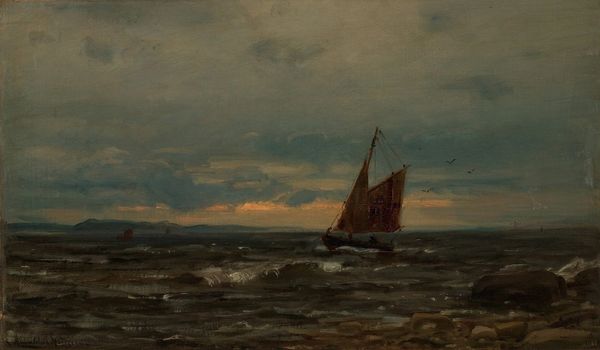
Copyright: Public Domain: Artvee
Amaldus Nielsen made this nocturne oil painting, Måneskinn, Kinn, in Norway during the late 19th or early 20th century. It embodies the cultural embrace of nature, characteristic of the Romantic era. Here, moonlight illuminates a humble coastal scene. A small wooden house stands by the water, its simple architecture blending into the landscape. A boat is seen at sea. The emphasis isn’t on grand historical events or aristocratic portraits. Instead, Nielsen highlights the quiet beauty of the Norwegian coastline. Such depictions were vital in shaping a national identity, particularly during Norway’s push for independence. By focusing on the serene and timeless qualities of nature, artists like Nielsen contributed to a sense of cultural pride rooted in the land itself. As historians, we delve into exhibition records, political writings, and cultural debates to understand how art like this played a role in shaping national consciousness. Art is never made in a vacuum; it reflects and shapes the society around it.
Comments
No comments
Be the first to comment and join the conversation on the ultimate creative platform.
